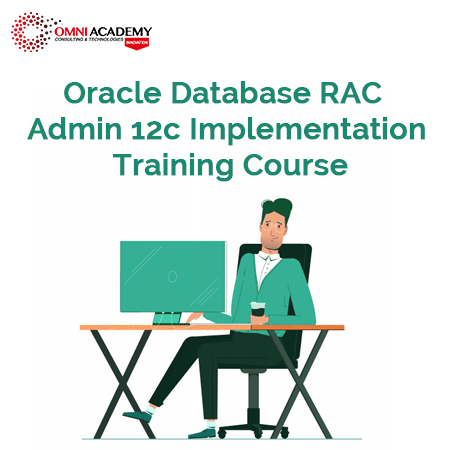IGCSE Physics (Online Classes)
IGCSE Physics helps learners to understand the technological world in which they live, and take an informed interest in science and scientific developments. The syllabus includes the basic principles and concepts that are fundamental to the subject, some current applications of physics, and a strong emphasis on practical skills.
Learners also develop an understanding of the scientific skills essential for progression to Cambridge International AS & A Level, further education or a career related to science.
Course Content:
1: General Physics
Length and time
Core
• Use and describe the use of rules and measuring cylinders to find a length or a volume
• Use and describe the use of clocks and devices, both analogue and digital, for measuring an
interval of time
• Obtain an average value for a small distance and for a short interval of time by measuring multiples (including the period of a pendulum)
Motion
Core
• Define speed and calculate average speed from total distance total time
• Plot and interpret a speed–time graph or a distance–time graph
• Recognise from the shape of a speed–time graph when a body is
– at rest
– moving with constant speed
– moving with changing speed
• Calculate the area under a speed–time graph to work out the distance travelled for motion with
constant acceleration
• Demonstrate understanding that acceleration and deceleration are related to changing speed
including qualitative analysis of the gradient of a speed–time graph
• State that the acceleration of free fall for a body near to the Earth is constant
Mass and weight
Core
• Show familiarity with the idea of the mass of a
body
• State that weight is a gravitational force
• Distinguish between mass and weight
• Recall and use the equation W = mg
• Demonstrate understanding that weights (and
hence masses) may be compared using a balance
Density
Core
• Recall and use the equation ρ = mV
• Describe an experiment to determine the density of a liquid and of a regularly shaped solid and
make the necessary calculation
• Describe the determination of the density of an irregularly shaped solid by the method ofdisplacement
• Predict whether an object will float based on density data
Forces
Effects of forces
Core
• Recognise that a force may produce a change in size and shape of a body
• Plot and interpret extension–load graphs and describe the associated experimental procedure
• Describe the ways in which a force may change the motion of a body
• Find the resultant of two or more forces acting along the same line
• Recognise that if there is no resultant force on a body it either remains at rest or continues at
constant speed in a straight line
• Understand friction as the force between two surfaces which impedes motion and results in
heating
• Recognise air resistance as a form of friction
Turning effect
Core
• Describe the moment of a force as a measure of its turning effect and give everyday examples
• Understand that increasing force or distance from the pivot increases the moment of a force
• Calculate moment using the product force × perpendicular distance from the pivot
• Apply the principle of moments to the balancing of a beam about a pivot Supplement
• Apply the principle of moments to different
situations
Conditions for equilibrium
Core
• Recognise that, when there is no resultant force and no resultant turning effect, a system is in
equilibrium Supplement
• Perform and describe an experiment (involving vertical forces) to show that there is no net moment on a body in equilibrium
Centre of mass
Core
• Perform and describe an experiment to determine the position of the centre of mass of a
plane lamina
• Describe qualitatively the effect of the position of the centre of mass on the stability of simple objects
Energy resources
Core
• Describe how electricity or other useful forms of
energy may be obtained from:
– chemical energy stored in fuel
– water, including the energy stored in waves,
in tides, and in water behind hydroelectric
dams
– geothermal resources
– nuclear fission
– heat and light from the Sun (solar cells and
panels)
– wind
• Give advantages and disadvantages of each method in terms of renewability, cost, reliability,
scale and environmental impact
• Show a qualitative understanding of efficiency
2 Thermal physics
States of matter
Core
• State the distinguishing properties of solids,
liquids and gases
Molecular model
Core
• Describe qualitatively the molecular structure of solids, liquids and gases in terms of the
arrangement, separation and motion of the molecules
• Interpret the temperature of a gas in terms of the motion of its molecules
• Describe qualitatively the pressure of a gas in terms of the motion of its molecules
• Show an understanding of the random motion of particles in a suspension as evidence for the
kinetic molecular model of matter
• Describe this motion (sometimes known as Brownian motion) in terms of random molecular bombardment
Evaporation
Core
• Describe evaporation in terms of the escape of more-energetic molecules from the surface of a
liquid
• Relate evaporation to the consequent cooling of the liquid
Pressure changes
Core
• Describe qualitatively, in terms of molecules, the effect on the pressure of a gas of:
– a change of temperature at constant volume
– a change of volume at constant temperature
2:Thermal properties and temperature
Thermal expansion of solids, liquids and gases
Core
• Describe qualitatively the thermal expansion of solids, liquids, and gases at constant pressure
• Identify and explain some of the everyday applications and consequences of thermal expansion
Measurement of temperature
Core
• Appreciate how a physical property that varies with temperature may be used for the measurement of temperature, and state examples of such properties
• Recognise the need for and identify fixed points
• Describe and explain the structure and action of liquid-in-glass thermometers
Thermal capacity (heat capacity)
Core
• Relate a rise in the temperature of a body to an increase in its internal energy
• Show an understanding of what is meant by the thermal capacity of a body
Melting and boiling
Core
• Describe melting and boiling in terms of energy input without a change in temperature
• State the meaning of melting point and boiling point
• Describe condensation and solidification in terms of molecules
3: Thermal processes
Conduction
Core
• Describe experiments to demonstrate the properties of good and bad thermal conductors
Convection
Core
• Recognise convection as an important method of thermal transfer in fluids
• Relate convection in fluids to density changes and describe experiments to illustrate convection
Radiation
Core
• Identify infrared radiation as part of the electromagnetic spectrum
• Recognise that thermal energy transfer by radiation does not require a medium
• Describe the effect of surface colour (black or white) and texture (dull or shiny) on the emission,absorption and reflection of radiation
Consequences of energy transfer
Core
• Identify and explain some of the everyday
applications and consequences of conduction,
convection and radiation
3 Properties of waves, including light and sound
General wave properties
Core
• Demonstrate understanding that waves transfer energy without transferring matter
• Describe what is meant by wave motion as illustrated by vibration in ropes and springs and by experiments using water waves
• Use the term wavefront
• Give the meaning of speed, frequency, wavelength and amplitude
• Distinguish between transverse and longitudinal waves and give suitable examples
• Describe how waves can undergo:
– reflection at a plane surface
– refraction due to a change of speed
– diffraction through a narrow gap
• Describe the use of water waves to demonstrate reflection, refraction and diffraction
Light
Reflection of light
Core
• Describe the formation of an optical image by a plane mirror, and give its characteristics
• Recall and use the law angle of incidence = angle of reflection
Thin converging lens
Core
• Describe the action of a thin converging lens on a beam of light
• Use the terms principal focus and focal length
• Draw ray diagrams for the formation of a real image by a single lens
• Describe the nature of an image using the terms enlarged/same size/diminished and upright/inverted
Dispersion of light
Core
• Give a qualitative account of the dispersion of light as shown by the action on light of a glass prism including the seven colours of the spectrum in their correct order
Electromagnetic spectrum
Core
• Describe the main features of the electromagnetic spectrum in order of wavelength
• State that all electromagnetic waves travel with the same high speed in a vacuum
• Describe typical properties and uses of radiations in all the different regions of the electromagnetic
spectrum including:
– radio and television communications (radio
waves)
– satellite television and telephones
(microwaves)
– electrical appliances, remote controllers for
televisions and intruder alarms (infrared)
– medicine and security (X-rays)
• Demonstrate an awareness of safety issues
regarding the use of microwaves and X-rays
Sound
Core
• Describe the production of sound by vibrating sources
• Describe the longitudinal nature of sound waves
• State that the approximate range of audible frequencies for a healthy human ear is 20Hz to
20000Hz
• Show an understanding of the term ultrasound
• Show an understanding that a medium is needed to transmit sound waves
• Describe an experiment to determine the speed of sound in air
• Relate the loudness and pitch of sound waves to amplitude and frequency
• Describe how the reflection of sound may produce an echo
4 Electricity and magnetism
Core
• Describe the forces between magnets, and between magnets and magnetic materials
• Give an account of induced magnetism
• Distinguish between magnetic and non-magnetic materials
• Describe methods of magnetisation, to include stroking with a magnet, use of direct current
(d.c.) in a coil and hammering in a magnetic field
• Draw the pattern of magnetic field lines around a bar magnet
• Describe an experiment to identify the pattern of magnetic field lines, including the direction
• Distinguish between the magnetic properties of soft iron and steel
• Distinguish between the design and use of permanent magnets and electromagnets
Electrical quantities
Electric charge
Core
• State that there are positive and negative charges
• State that unlike charges attract and that like charges repel
• Describe simple experiments to show the production and detection of electrostatic charges
• State that charging a body involves the addition or removal of electrons
• Distinguish between electrical conductors and insulators and give typical examples
Current
Core
• State that current is related to the flow of charge
• Use and describe the use of an ammeter, both analogue and digital
• State that current in metals is due to a flow of electrons
Electromotive force
Core
• State that the electromotive force (e.m.f.) of an electrical source of energy is measured in volts
Supplement
• Show understanding that e.m.f. is defined in terms of energy supplied by a source in driving
charge round a complete circuit
Potential difference
Core
• State that the potential difference (p.d.) across a circuit component is measured in volts
• Use and describe the use of a voltmeter, both analogue and digital
Resistance
Core
• State that resistance = p.d./ current and understand qualitatively how changes in p.d. or resistance affect current
• Recall and use the equation R = V/ I
• Describe an experiment to determine resistance using a voltmeter and an ammeter
• Relate (without calculation) the resistance of a wire to its length and to its diameter
5: Electric circuits
Circuit diagrams
Core
• Draw and interpret circuit diagrams containing sources, switches, resistors (fixed and variable),
heaters, thermistors, light-dependent resistors, lamps, ammeters, voltmeters, galvanometers, magnetising coils, transformers, bells, fuses and relays
Series and parallel circuits
Core
• Understand that the current at every point in a series circuit is the same
• Give the combined resistance of two or more resistors in series
• State that, for a parallel circuit, the current from the source is larger than the current in each
branch
• State that the combined resistance of two resistors in parallel is less than that of either
resistor by itself
• State the advantages of connecting lamps in parallel in a lighting circuit
Dangers of electricity
Core
• State the hazards of:
– damaged insulation
– overheating of cables
– damp conditions
• State that a fuse protects a circuit
• Explain the use of fuses and circuit breakers and choose appropriate fuse ratings and circuit breaker settings
• Explain the benefits of earthing metal cases
Electromagnetic induction
Core
• Show understanding that a conductor moving across a magnetic field or a changing magnetic
field linking with a conductor can induce an e.m.f. in the conductor
• Describe an experiment to demonstrate electromagnetic induction
• State the factors affecting the magnitude of an induced e.m.f.
Details of the assessment
All candidates take three papers.
Candidates who have studied the Core subject content, or who are expected to achieve a grade D or below, should be entered for Paper 1, Paper 3 and either Paper 5 or Paper 6. These candidates will be eligible for grades C to G.
Candidates who have studied the Extended subject content (Core and Supplement), and who are expected to achieve a grade C or above, should be entered for Paper 2, Paper 4 and either Paper 5 or Paper 6. These candidates will be eligible for grades A* to G.
International Student Tuition Fee : 300 SAR | 80 USD (Per Month/ Per Course)
NOTE: If you have more than one child, you will need to work out the fees for each child individually. Our program officer will guide your further, please fill the inquiry form below (with you comments – if any).
Packages
| IGCSE Primary | Subject | SAR | USD | PKR |
| Cambridge Primary | English | 200 | 55 | 15,000 |
| Grade 6 | Math | 200 | 55 | 15,000 |
| Science | 200 | 55 | 15,000 | |
| IGCSE Lower Secondary | Subject | SAR | USD | PKR |
| Grade 7-8 | English | 200 | 55 | 15,000 |
| Math | 200 | 55 | 15,000 | |
| Science | 200 | 55 | 15,000 | |
| Cambridge O/A Levels | Subject | SAR | USD | PKR |
| O/A Levels | English | 200 | 55 | 15,000 |
| Math | 200 | 55 | 15,000 | |
| Science | 200 | 55 | 15,000 |
IMPORTANT
- Clearly describe the course level your child will be studying at.
- Select the subjects your child will be studying.
- Siblings fee concession up to 15%.
- Monthly Fee payment option available (as per your selected course duration).
WHY IGCSE Course from OMNI ?
Your Child’s Homeschooling Courses Will Include
FREE Resources
Related Courses
IELTS Preparation For Beginners
Learn how to Speak German – for Germany Visa (COURSE LEVELS A1-C2)
TEFL Course
TOEFL Course






